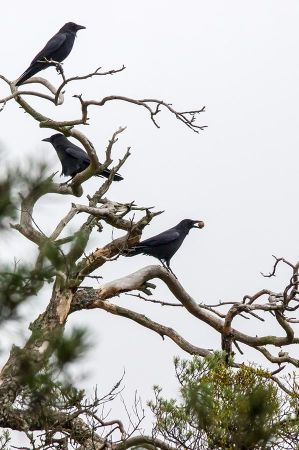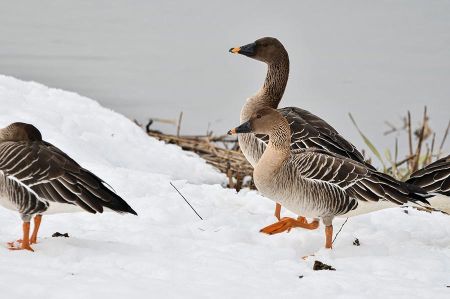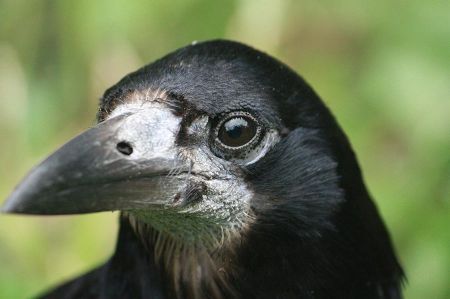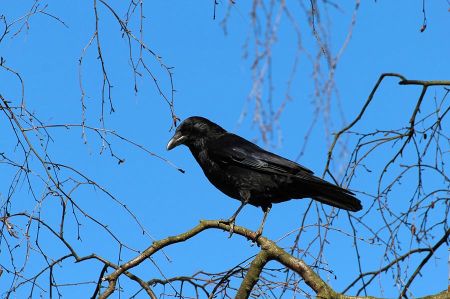Not all birds will be gone soon...!
- Written by Portal Editor
Swifts make the beginning together with the skylarks: they start heading south in August as early fliers among the migratory birds.
When the calls of the swifts in the cities fall silent, summer is coming to an end. “Swarms of lapwings, storks and starlings will soon gather in the meadows and fields again,” says Eva Goris,
Press spokeswoman for the German Wildlife Foundation. “Then a fascinating natural spectacle begins above our heads, as several billion birds are on the journey to avoid the lack of food in our winter,” says Goris. Insectivores such as reed warblers, warblers, warblers and house martins only find enough food in spring and summer in Germany. “They would starve in the winter.”
The nightingale, on the other hand, is one of the classic migratory birds
 There are migratory birds that undertake an exhausting journey to their distant winter quarters in Africa. Other species such as white-fronted geese and greylag geese only temporarily flee to warmer climes in the south of Germany when the weather is bad. Otherwise, like the wren and the sparrow, they prefer to stay in the country. The nightingale, on the other hand, is one of the classic migratory birds that flies to its southern wintering areas completely regardless of the weather. All birds have built up enormous reserves of fat in the summer in order to survive the winter.
There are migratory birds that undertake an exhausting journey to their distant winter quarters in Africa. Other species such as white-fronted geese and greylag geese only temporarily flee to warmer climes in the south of Germany when the weather is bad. Otherwise, like the wren and the sparrow, they prefer to stay in the country. The nightingale, on the other hand, is one of the classic migratory birds that flies to its southern wintering areas completely regardless of the weather. All birds have built up enormous reserves of fat in the summer in order to survive the winter.
Since climate change is now also affecting migratory birds, some species have already changed their behaviour and migration routes. Today, cranes often overwinter in Spain and France instead of flying all the way to Africa. “Blackcaps are staying in England and starlings are increasingly wintering in our big cities,” says Goris. Germany itself serves as winter quarters for many breeding birds from northeastern Europe. Rough-legged buzzards, bean geese and rooks come to us to escape the northern cold and the lack of food.
... the others still use the usual route!
 And it usually leads over the Bosphorus near Istanbul, further over the large lakes in the triangle between Afyon, Burdur and Konya, further over the Göksu Delta near Silifke, the Akyatan Lake and Seyhan Nehri near Adana and as the last stop on the way to Africa in Turkey at the Karasu Cayi and the Asi Nehri near Hatay, better known as Antakya.
And it usually leads over the Bosphorus near Istanbul, further over the large lakes in the triangle between Afyon, Burdur and Konya, further over the Göksu Delta near Silifke, the Akyatan Lake and Seyhan Nehri near Adana and as the last stop on the way to Africa in Turkey at the Karasu Cayi and the Asi Nehri near Hatay, better known as Antakya.
We have been able to observe the arrival of the huge flocks of birds over Istanbul several times and, like many other people watching, we were fascinated by the number and the flight formations demonstrated. The number of local Turkish bird watchers or, as they say in modern German, “bird watchers” is constantly increasing. And that's a good thing, because only through widespread awareness among the population and the action of many individuals can the bird routes and the associated resting and resting places be permanently preserved and protected.
 How much every individual can help becomes clear in the immediate neighbourhood when one sees the connection between the spreading flocks of insects and the use of pesticides with the senseless shooting of birds, which unfortunately the authorities have still not rigorously stopped becomes.
How much every individual can help becomes clear in the immediate neighbourhood when one sees the connection between the spreading flocks of insects and the use of pesticides with the senseless shooting of birds, which unfortunately the authorities have still not rigorously stopped becomes.
Make the most of your well-deserved vacation by observing birds in their natural surroundings in a quiet and relaxing way. Locals will quickly tell you about observation sites close to your holiday destination simply because of your interest. Whether on Lake Bafa in the Aegean region or on the Göksu Delta near Silifke on the Turkish Riviera.
In co-operation with
Eva Goris / Press Spokesperson
German Wildlife Foundation
Please also read:
